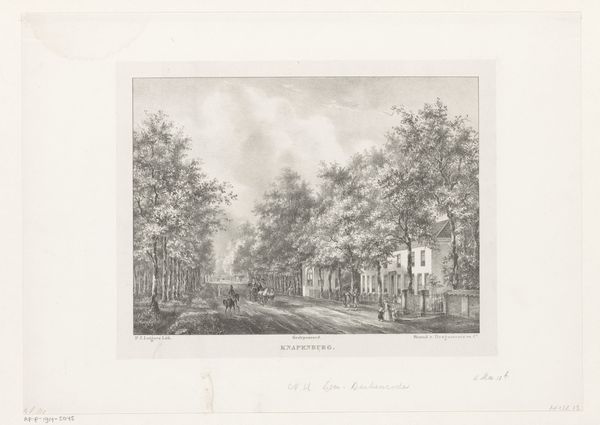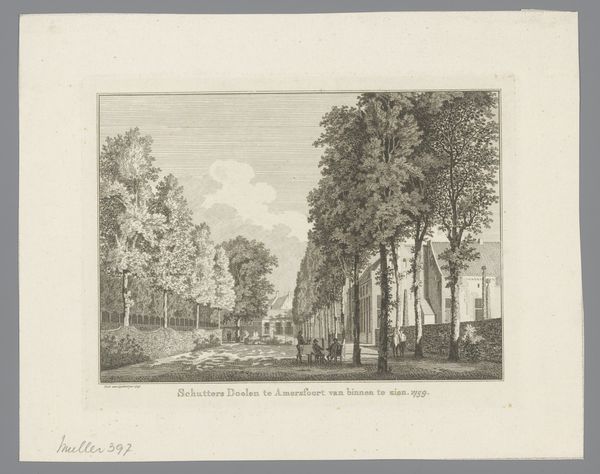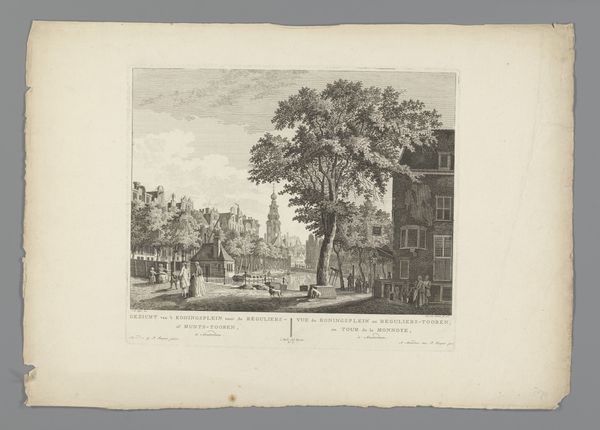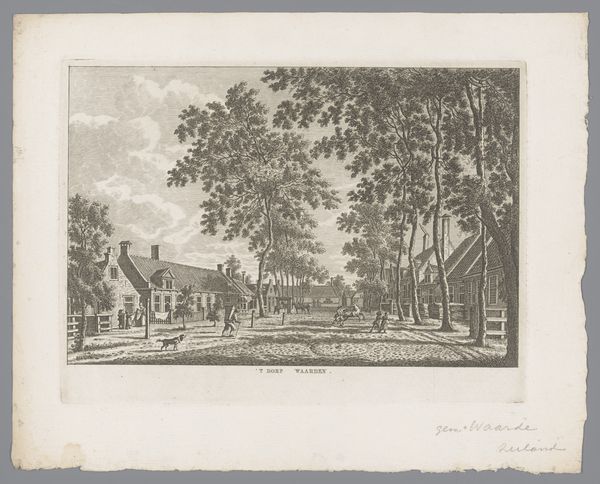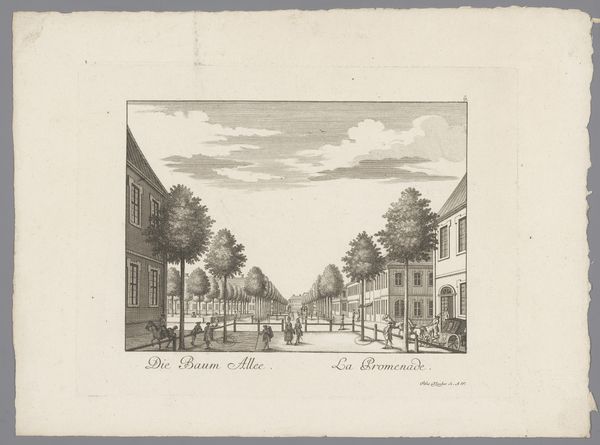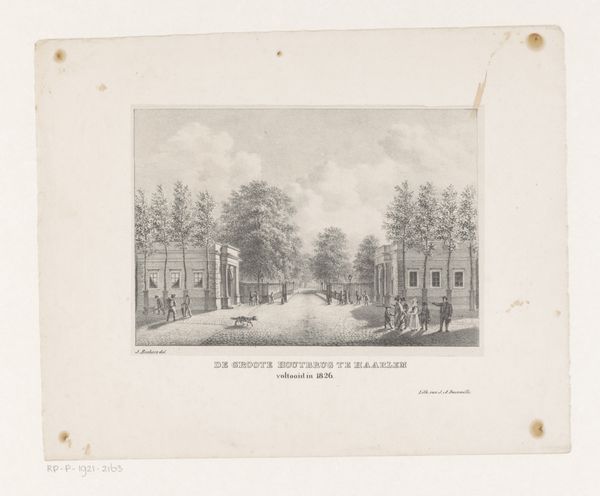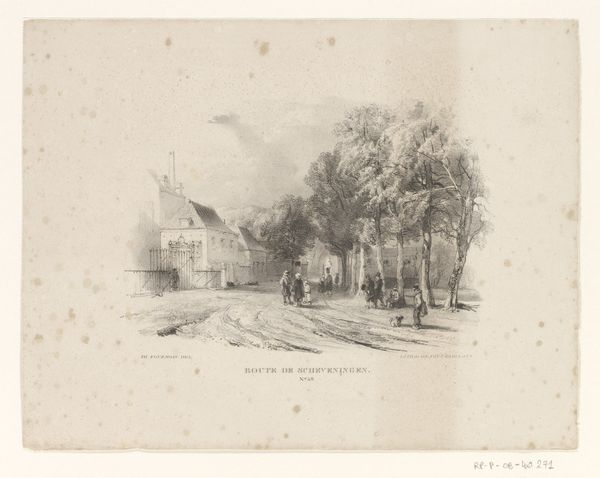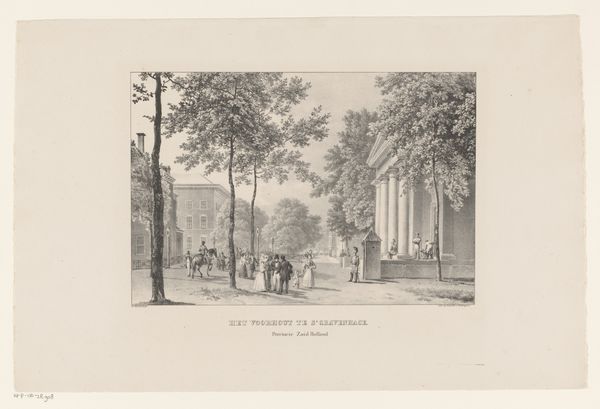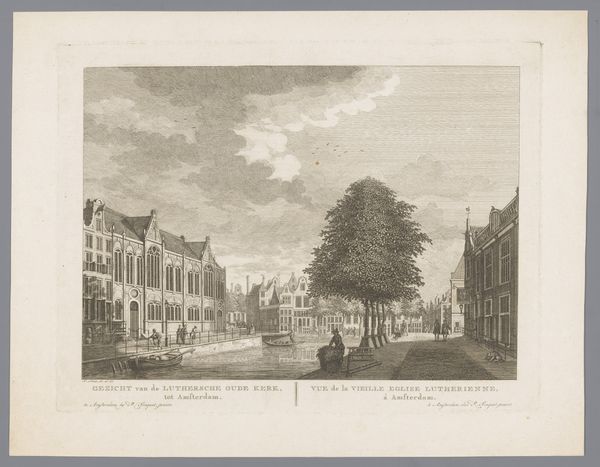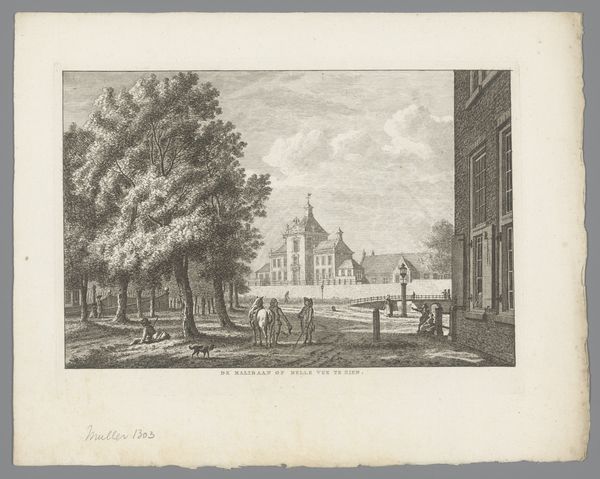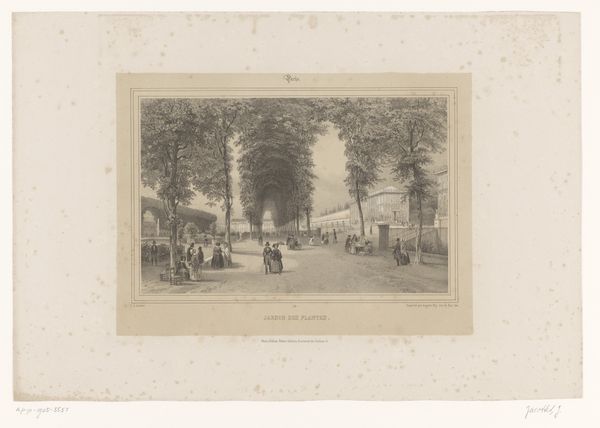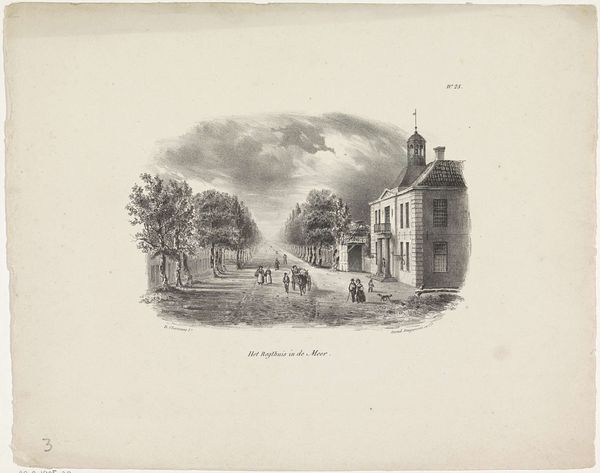
lithograph, print, etching
#
lithograph
# print
#
etching
#
cityscape
#
realism
Dimensions: height 262 mm, width 304 mm
Copyright: Rijks Museum: Open Domain
Curator: This subtle lithograph, etching, and print is titled “Gezicht op het Korte Voorhout te 's-Gravenhage", offering a glimpse of The Hague between 1840 and 1860, captured by an anonymous artist. What’s your first impression? Editor: It's bathed in this soft, almost melancholy light. A quiet stillness permeates the scene; it's the sort of image that whispers stories of times long past. I'm struck by how everyday and ethereal the two blend so seamlessly. Curator: Absolutely, it possesses a unique charm, capturing the mundane within an airy and picturesque presentation. Thinking about the work itself as an object—a print created through both lithography and etching techniques, produced mechanically and consumed widely—complicates the "realism" apparent within the cityscape, doesn't it? Editor: Yes, it highlights how labor, material conditions and distribution can shape artistic representation. You can almost hear the stones scraping and the etching tools marking; the anonymous hands that crafted this vision for mass consumption...Were these made to sell to locals, tourists, or for someone entirely different? Curator: It would likely have served multiple purposes. Souvenir, documentary, or even aspirational view of civic life. Considering the combined etching and lithographic processes, it's intriguing how the artist balanced detail with efficiency to produce these for the market. Did the materiality serve to invite an imagined and more refined version of their material and everyday existence? Editor: That's it precisely, I find the print a fascinating lens through which we see not just a physical space but also the subtle class distinctions in representing such an ordinary public street. Who could buy this, who is missing from it, what is romanticized? Curator: These considerations provide layers of depth. A city street, crafted with industry and intention and speaking now to many aspects of society beyond what it immediately displays. It becomes, through technique, a mirror. Editor: Yes, and those processes invite me to consider not just what I’m seeing, but how— and ultimately, who made it so. The materiality really emphasizes that.
Comments
No comments
Be the first to comment and join the conversation on the ultimate creative platform.
